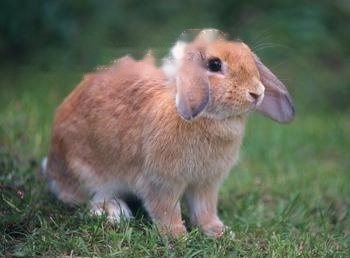
American Mini Lop
American Mini Lop Rabbit, also commonly known as Binny lop, small lop or pygmy lop.
English name: Himalayan
Character:Well-behaved
Origin: China
Lifetime: 8 years
Himalaya Rabbit is an inherent breed in China , the color of the body will change with the change of temperature. When the temperature is high, the whole body is covered with white, and when the temperature is low, it will appear standard jet black, that is, the color of the limbs and head will change to black.
Chinese Name: Himalayan Rabbit
Common Name Alias: Wuhei Rabbit
English Name: Himalayan
Kingdom: Animal Kingdom
Department: Chordate
Subphylum: Vertebrate subphylum
Class: Mammalia
Order: Lagomorphs
Family: Lagoidae
Genus: Lapus
Origin: North and South Himalayas.
Reproduction: Viviparous.
Physical characteristics: eyes are red, the ends of the body (tail, feet, ears, nose) are black, and the rest are white. Black color is determined by a recessive gene, and its phenotype is also affected by temperature. The temperature at the end of the rabbit's body is lower than that of the trunk, and all body parts with body temperature below 33°C appear black.
Food: herbivorous.
Certification Association: American Rabbit Breeders Association (ARBA).
Himalayan rabbit will change color, which may inherit the characteristics of its hare. Hare living in the wild will change its protective color due to changes in the weather. In the seasons of the year, they will put on a little black fur, which is also passed on to some breeds bred from Himalayan rabbits .
The Himalayan rabbit weighs 1.1~2kg. The body is long and the head is long and narrow. The colors are very special: the eyes are red, the ends of the body (tail, feet, ears, nose) are black, and the rest is white. Black color is determined by a recessive gene, and its phenotype is also affected by temperature. The temperature at the end of the rabbit's body is lower than that of the trunk, and all body parts with body temperature below 33°C appear black. Use an ice pack to reduce the back temperature of the Himalayan rabbit, and the back will appear black; if the temperature returns to normal, the black will disappear. This is because the enzyme encoded by the coat color gene is only active below 33°C. Of course, you can also put an ice pack on the rabbit's back, and its back will be black!
The living environment of Himalayan rabbits mainly refers to the cage The selection and arrangement of, generally speaking, when purchasing rabbit The cage is not suitable for it to live in, because the rabbit grows very fast, so the rabbit cage will quickly become smaller, be sure to arrange a reasonable environment for the Himalayan rabbit.
First, the arrangement of the cage of Himalayan rabbits
First of all, try not to use the bottom of the net, it is best to put a soft pad or soft cloth at the bottom of the cage, because the rabbit's hind feet have a natural sensory soft pillow , used to detect incoming enemies. Standing on the bottom of the cage for a long time will make the rabbit's feet grow meaty, and the shape of the feet will become splayed feet, which is not good for walking. In severe cases, it may resist being picked up. In addition, the rabbit will choose one of the four corners of the cage as the toilet seat, and the opposite corner is the sleeping bed. As long as a soft cloth is placed on the bed, it will sleep well.
Second, the choice of bedding material for Himalayan rabbits
Plying wood bran is a designated action, which is used for absorbing urine, and so that the thrown rabbit hair will not be raised everywhere, remember that it is important to often Replace, otherwise rabbits are prone to skin diseases, such as toe hair loss, calluses, etc. It is best to put wood chaff on the rabbit toilet. To train it to use the toilet, it is best to hold it in the toilet immediately when it poops, and it will know where it is "convenient" later.
The diet of Himalayan rabbits should not only ensure health and nutrition, but also ensure safety and hygiene, especially when feeding some green leafy vegetables, pesticide residues, food The cleanliness and moisture content of the rabbits will cause discomfort in Himalayan rabbits, so try to do the following points as much as possible.
Himalayan rabbits are herbivorous, so provide an unlimited supply of grass hay. You can also add some oatmeal or molar feed to the feed. In order to balance nutrients, don't just feed the feed, try to eat some fresh and pollution-free vegetables after the Himalayan rabbit is 6 months old, such as: water spinach, celery, green vegetables, sweet potato leaves, carrots, etc. The specific amount depends on the physical condition of the Himalayan rabbit, but it is best not to overdose.
Because of the poor detoxification function of Himalayan rabbits, it is necessary to pay attention to the best without pesticides. Then dry the remaining water with a kitchen towel. (It can't be too wet, otherwise it will cause diarrhea, and it will be difficult to cure the diarrhea.) It should be noted that vegetables and fruits are not the same, and fruits are not recommended for Himalayan rabbits. Because the fruit is a burden on the stomach and teeth of the Himalayan rabbit. If you have to supply it, please do not exceed 1-2 tablespoons a day. Also, Himalayan rabbits need to drink water, and raw water cannot be given, it must be boiled water.